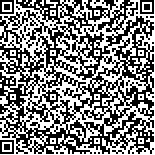下载中心
优秀审稿专家
优秀论文
相关链接
摘要

利用被动微波遥感反演积雪深度一直是积雪遥感领域中的研究热点。在现有的积雪深度反演算法中,NASA算法因其简洁、易于扩展的特点,成为应用最为广泛的算法。但NASA算法存在着一定不足:首先,由于NASA算法基于线性拟合得出,在应用到其他研究区域时需要对反演公式进行重新拟合,适用范围受到一定限制;其次,由于算法中引入的19 GHz与37 GHz的亮温差在雪深达到一定范围时会达到饱和,因此算法会低估积雪深度。本文针对现有反演算法的不足之处,结合蚁群智能算法的特点,发展了基于蚁群算法的积雪深度反演算法;此外,针对NASA算法中存在的雪深低估问题,引入了AMSR-E 10.7 GHz亮温数据,对算法进行了改进。利用MEMLS模型的模拟数据与AMSR-E辐射亮温数据对算法进行实验,并采用实测数据与AMSR-E雪水当量产品对算法的反演精度进行评价。结果表明,两种积雪深度反演算法均是可行的,反演精度与现有产品相比有较为明显的改进。
Snow-depth retrieval from passive microwave remote-sensing data has always been an active research area, though there are still several problems that need to be solved. Due to its concision and expansibility, the National Aeronautics and Space Administration (NASA) algorithm has become the most widely used among the existing snow-depth retrieval algorithms. However, this algorithm still has its limitations: first, since it is based on linear fitting, the NASA algorithm needs to be re-fitted when we need to accurately measure snow depth greater than 1 m. Second, because the difference between the 19 GHz and 37 GHz brightness temperature measurements is completely saturated at different snow-depth ranges, the NASA algorithm will underestimate snow depth. In order to make improvements to these existing algorithms, the research in this article has attempted to develop a new algorithm of snow-depth retrieval based on the Ant Colony Optimization. Moreover, with respect to the underestimation of snow depth of the NASA algorithm, this article introduces 10.7 GHz brightness temperature measurements taken by AMSR-E. Simulations from the Microwave Emission Model of Layered Snowpacks (MEMLS) and the brightness temperature measurements of AMSR-E are applied to the snow-depth retrieval experiment. The retrieval accuracy of the algorithm is evaluated using the field-measured data and the AMSR-E Snow Water Equivalent (SWE) product. Our results indicate that both of the algorithms produce accurate results, and the inversion results have improved to a certain extent compared to the AMSR-E product.

